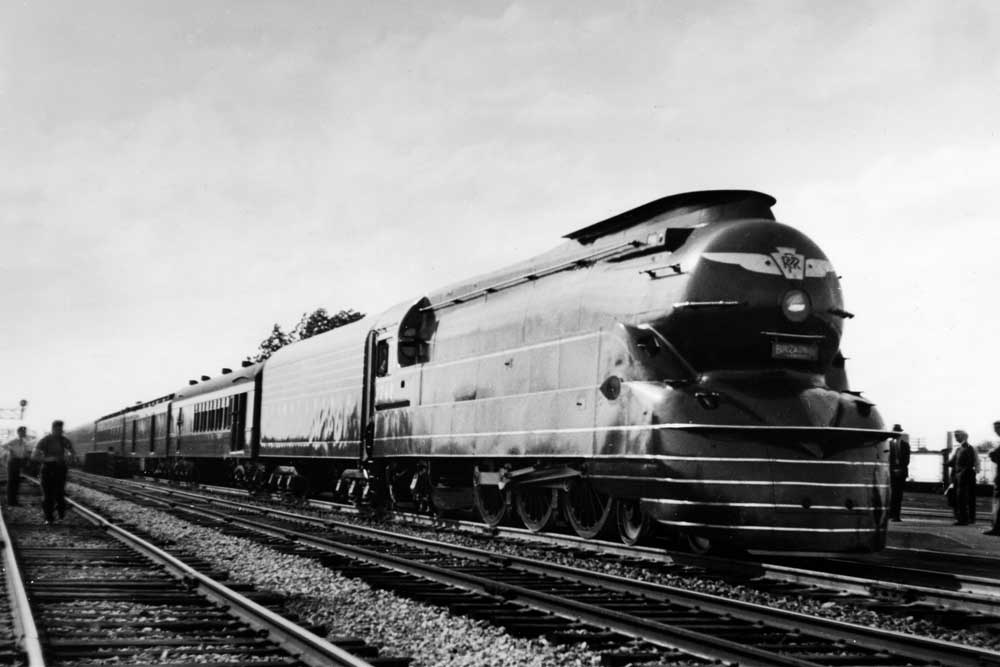
‘Broadway’ streamlined On June 15, 1938 — the 36th anniversary of its launch — the Pennsylvania Railroad’s Broadway Limited was upgraded to a streamlined train, albeit with a rebuilt heavyweight RPO and diner. Given a shroud in 1936, K4s 3468 heads the new equipment’s inaugural eastbound run at Englewood. Rival New York Central completely streamlined […]
Read More…
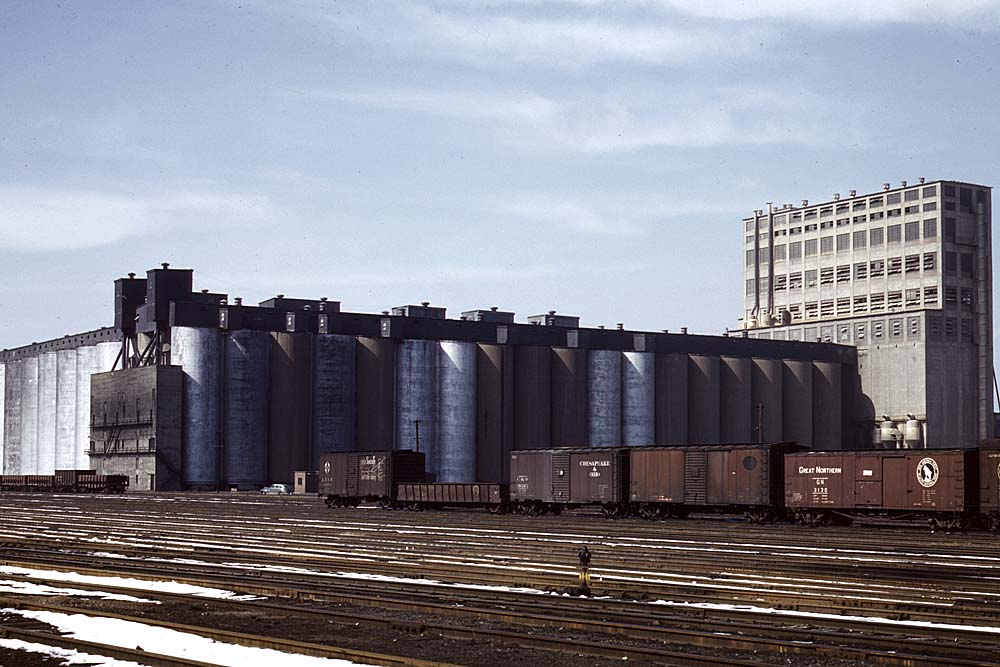
10-million bushels The Santa Fe’s 10-million bushel grain elevator at Argentine (Kansas City), Kan., was among the largest in the country when photographed here in 1943. Jack Delano photo […]
Read More…
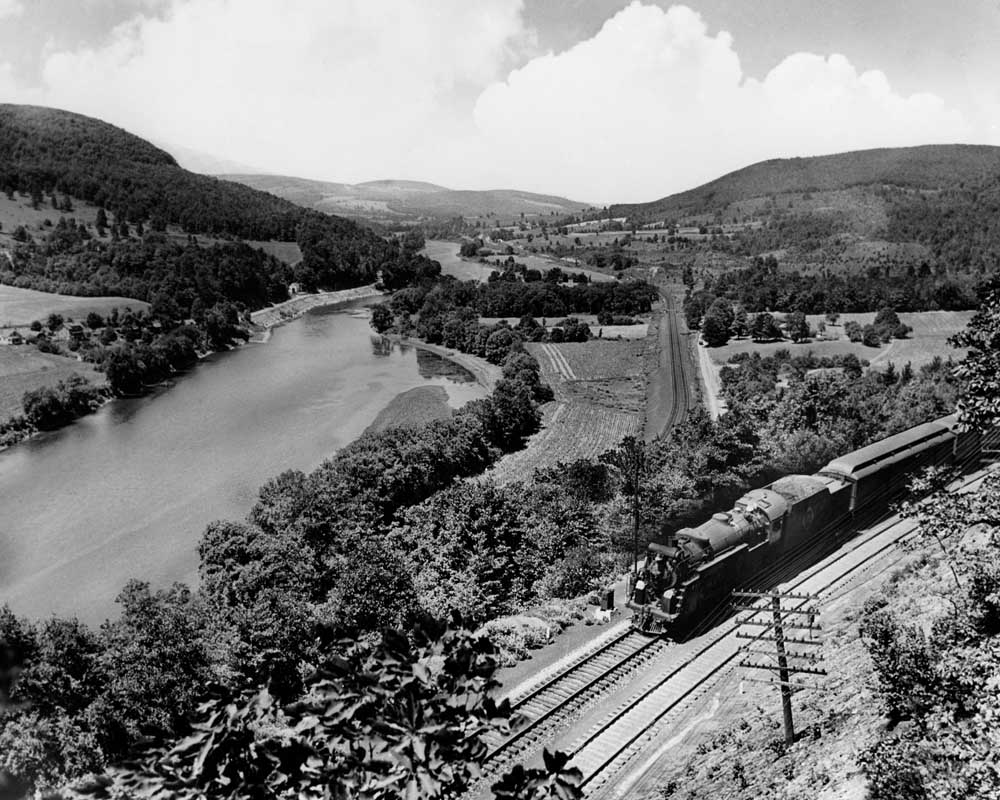
‘Erie Limited’ The Erie Limited’s route takes it through some of the best scenery in the East. Far above he Susquehanna River and the Delaware & Hudson main line, westbound train No. 1 approaches famed Starrucca Viaduct. Erie Railroad photo […]
Read More…
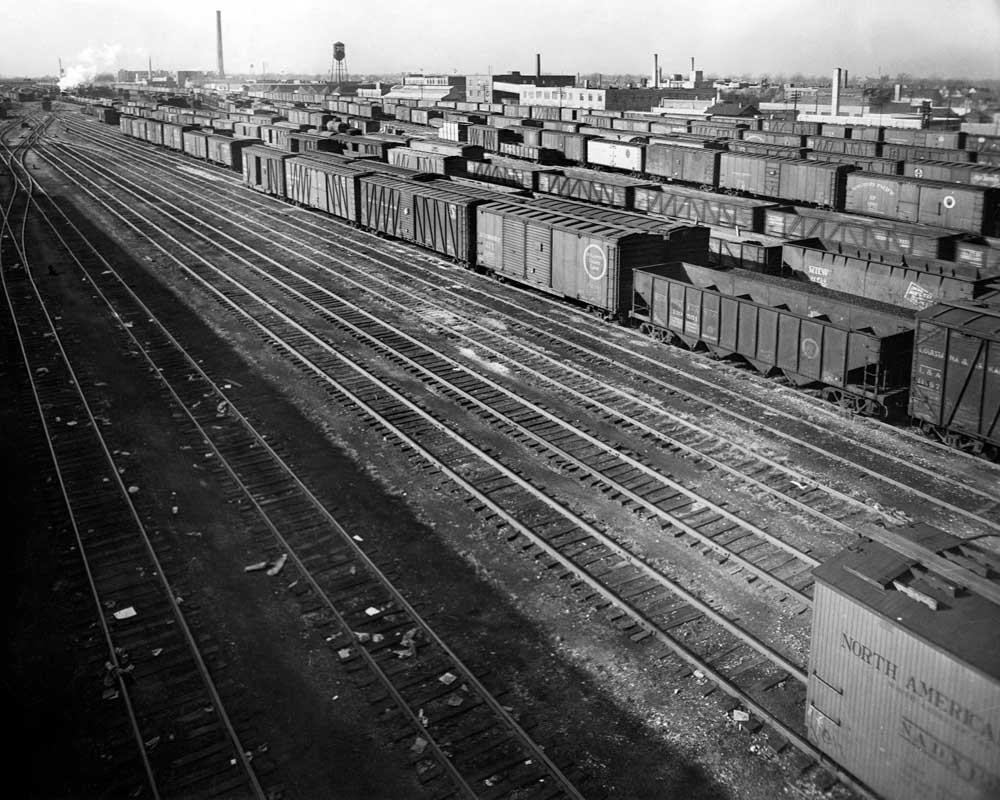
Galewood Yard The Milwaukee Road’s Galewood Yard in Chicago supported numerous rail-served industries on the city’s west side. A variety of freight cars are visible in this undated view, including boxcars, gondolas, and hoppers of both steel and wood construction. Milwaukee Road photo […]
Read More…
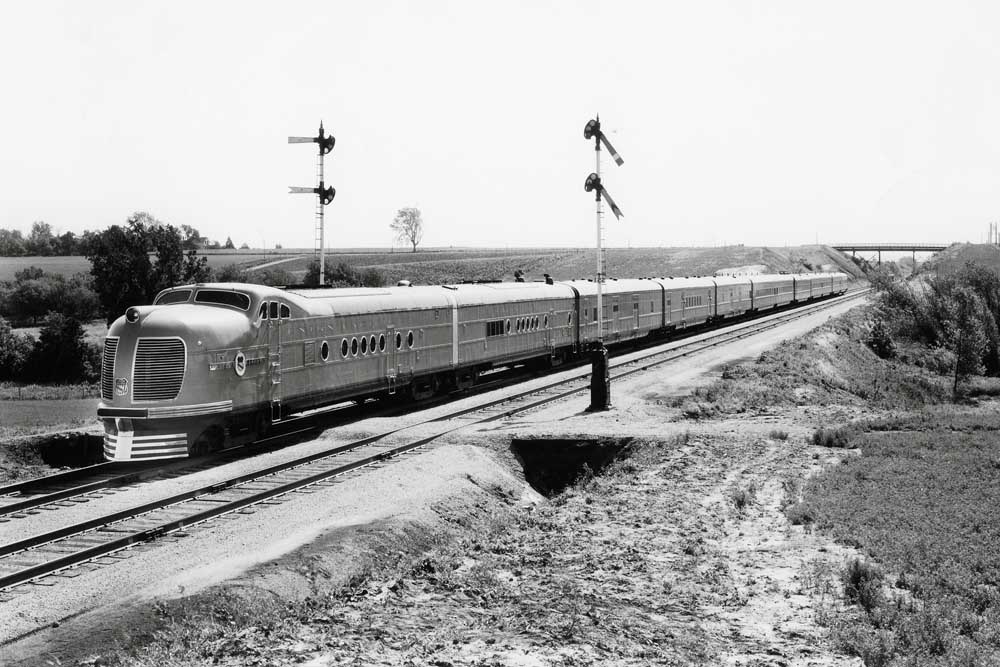
Lane Cutoff Brand-new in mid-1936, one of the two City of Denver trains poses on the Lane Cutoff west of Omaha, a favorite spot for Union Pacific publicity photos. The portholed cab and booster units rode on two trucks each, but were connected by a span bolster, not couplers. Union Pacific photo […]
Read More…
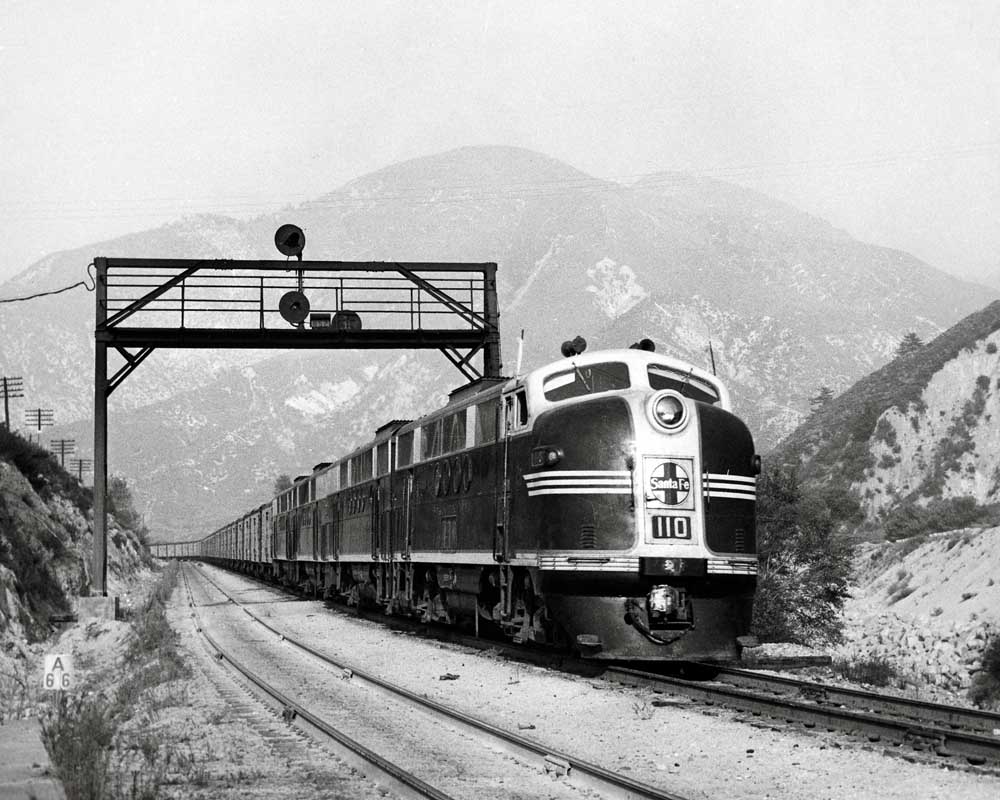
State of the art A classic A-B-B-A set of EMD FTs — the state of the locomotive art in 1940 — lead a Santa Fe freight over Southern California’s Cajon Pass. Santa Fe photo […]
Read More…
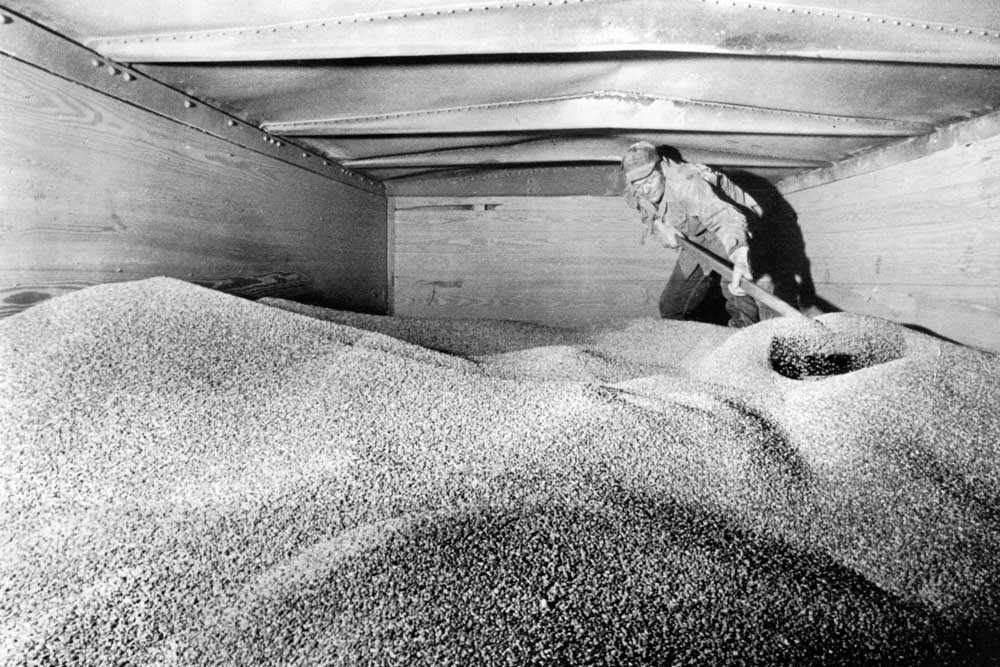
Keeping an even keel It was important for boxcar loads of grain to be level. Sometimes workers had to enter the cars and level the loads by hand, as with this carload of wheat. Jeff Wilson collection […]
Read More…
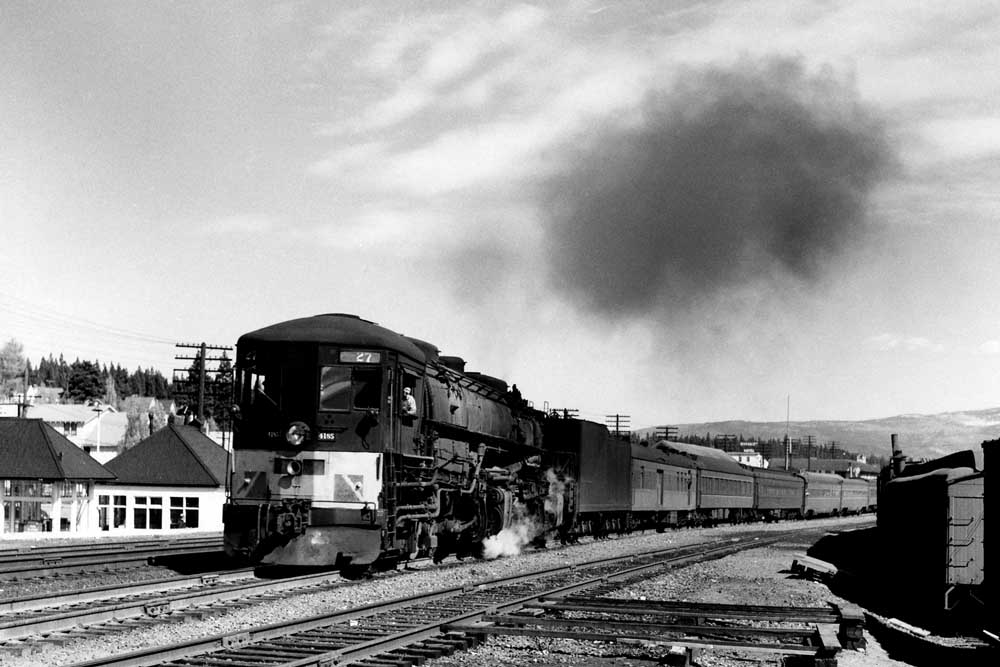
Cab-forward conveyance A puff of oil smoke hangs in the air over Truckee as AC 4-8-8-2 No. 4185 gets the westbound Overland moving after a station stop. In 6 hours, the train will arrive at Oakland Pier. Jim Morley photo […]
Read More…
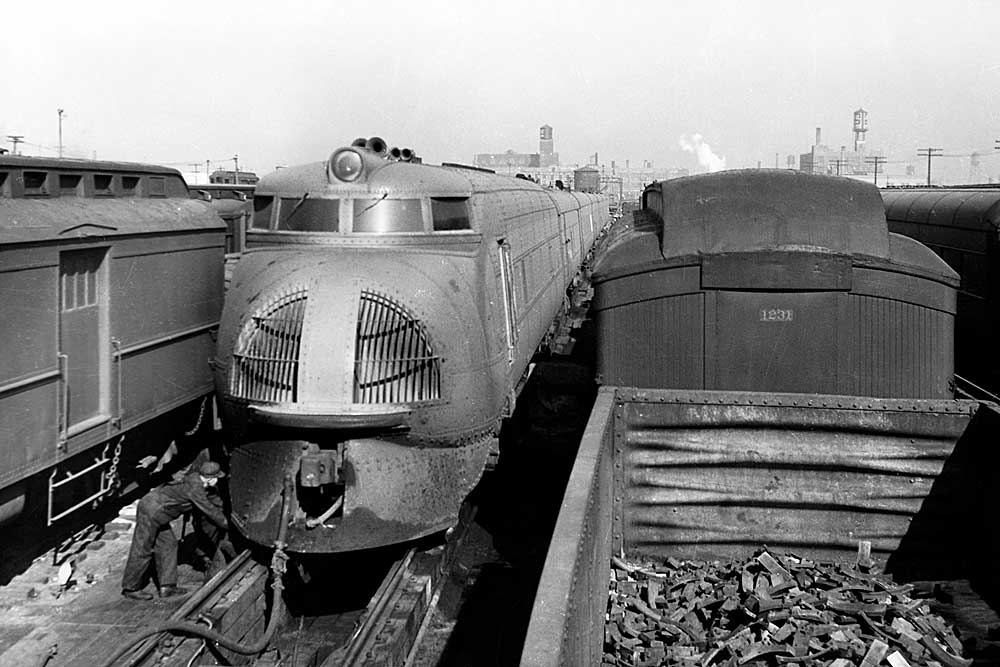
M-10001 In the late 1930s, the Union Pacific’s streamliner M-10001 is serviced between runs in Chicago; although dirty, the streamliner stands out from older steel and wood cars in the yard. Alexander Maxwell photo […]
Read More…
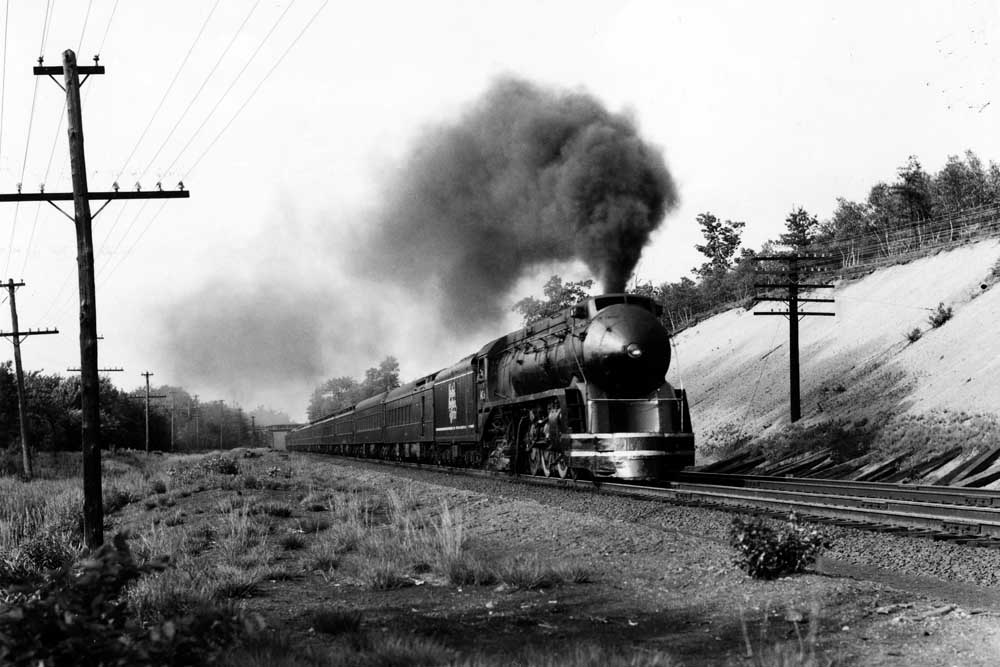
Steam queen For a few years in the late 1930s, the steam queens of New Haven’s Shore Line were 10 class I-5 4-6-4s. The handsome Hudsons’ wheel-balance woes prompted NH to begin acquiring a fleet of 60 DL109 diesels in 1941. Here, an I-5 roars west with the Merchants Limited at Sharon, Mass. Wayne Brumbaugh […]
Read More…
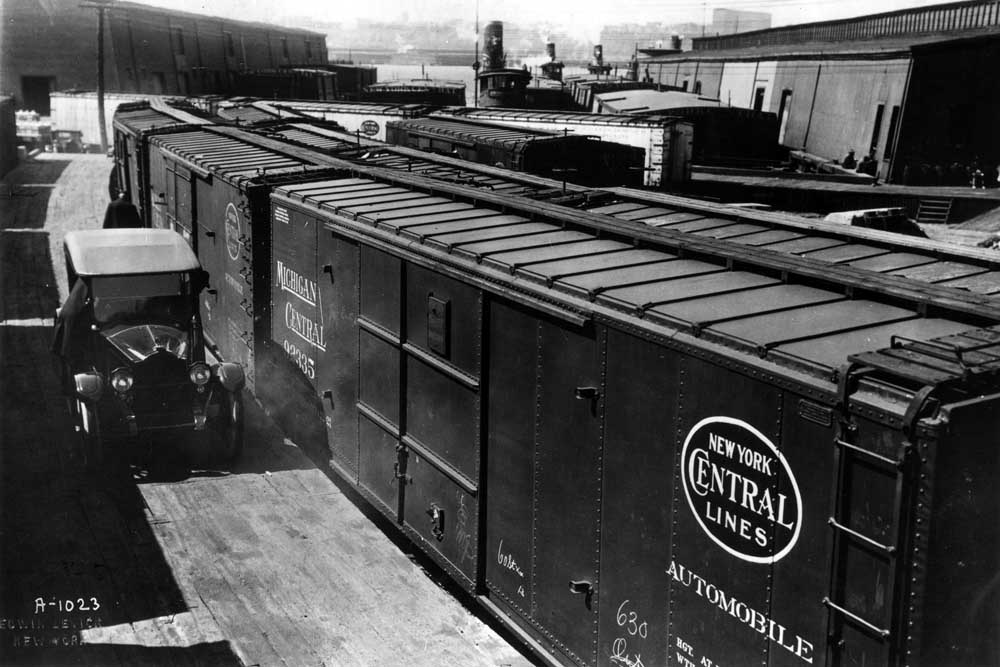
Shipping container New York Central (and subsidiary Michigan Central) had a large fleet of steel auto cars by the early 1920s. These had 10-foot door openings with 6- and 4-foot platesteel doors. New York Central photo […]
Read More…
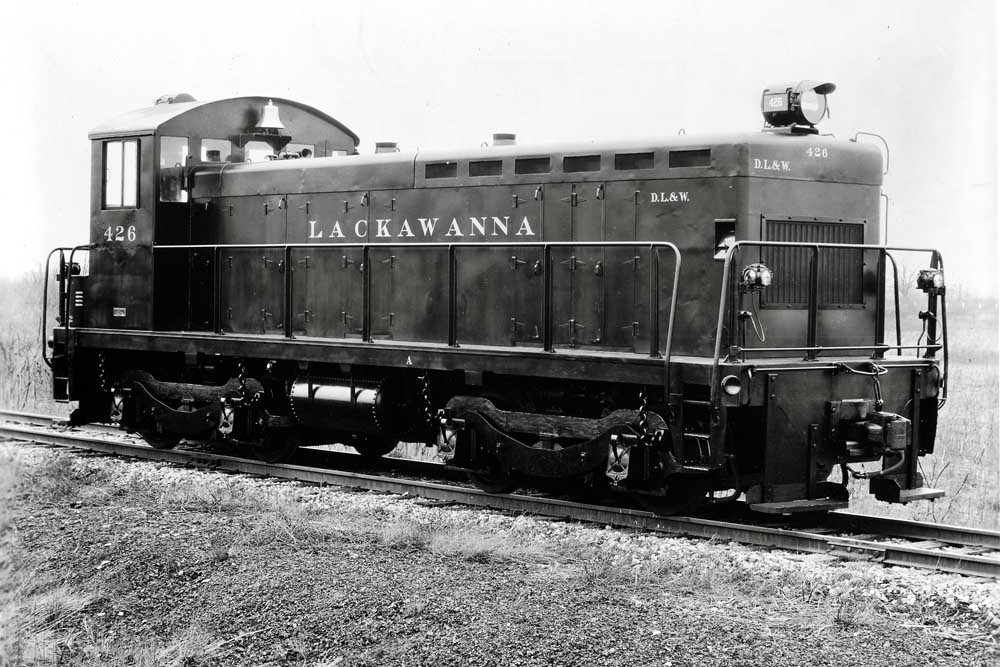
Distinctive duo Electro-Motive’s first two diesel switchers, Delaware, Lackawanna & Western Nos. 425 and 426, were built at General Electric’s Erie, Pa., plant prior to the opening of EMC’s own assembly plant at LaGrange, Ill. The pioneering locomotives, built in 1935, have distinctive cab, hood, and truck designs that wouldn’t be repeated on later EMC […]
Read More…












